Electric vehicles in India are evolving fast, and while we’ve spent years talking about range, charging times, and acceleration figures, there’s an entirely different kind of performance now demanding attention: the tech.
So as the Tata Harrier EV pushes its way into the Indian market, we take a break from bhp and torque to explore what really powers the car; the technology.
Today, we’re diving deep into the Tata Harrier EV, not for its design or drivetrain, but for the features, interfaces, and intelligent systems that elevate this car from capable to cutting-edge.
Command Centre
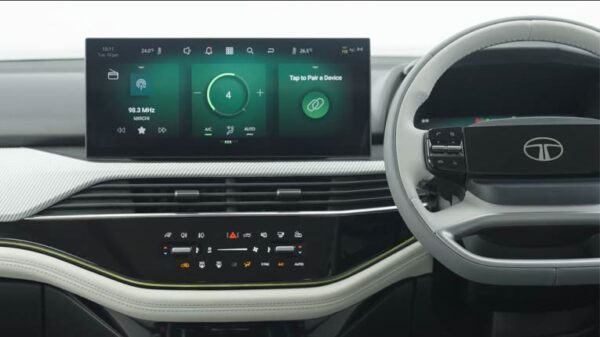
At the heart of the Harrier EV sits a 14.5-inch Samsung Neo QLED touchscreen, bright enough for direct sunlight use and responsive enough to keep you engaged without frustration.
Backing this visual treat is a Qualcomm Snapdragon processor, making UI navigation smooth and glitch-free; something we rarely say about in-car systems.
You’ll find wireless Android Auto and Apple CarPlay, but also Tata’s own ecosystem, complete with MapMyIndia’s Mappls app for those looking for offline navigation reliability.
Digital Dials, Smart Climate, and ‘Phygital’ Controls
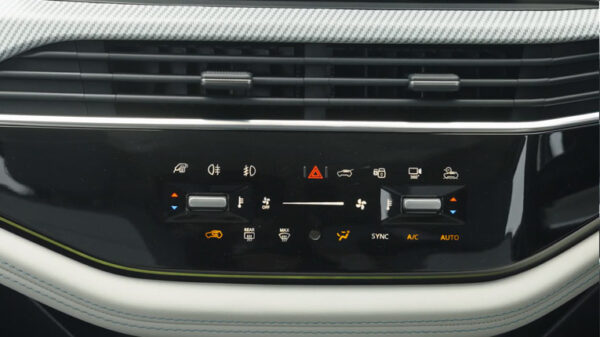
Behind the wheel, a 12.25-inch fully digital instrument cluster gives you a wide array of customizable data; from range and route to live ADAS readouts.
Tata’s new ‘Phygital’ controls for climate control mix tactile feedback with touch-based input, and they’re surprisingly intuitive.
Physical knobs adjust temperature, while capacitive touch lets you fine-tune the fan speed or toggle other functions like boot access, camera views, and door locks.
More Than an IRVM
One of the most unique touches on the Tata Harrier EV?
Its IRVM doubles up as a screen.
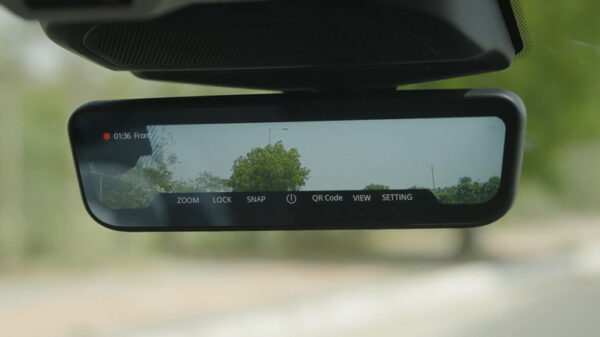
It gives you a front or rear live camera feed, can work as a dashcam, snap photos, or even record automatically if someone tampers with the car, making it more of a security asset than just a rearview mirror.
Connectivity and Off-Road Readiness

The front console offers both USB Type-C (45W fast charge) and USB-A ports, along with a wireless charging pad.
Thanks to its dual-motor, all-wheel-drive setup, the Harrier EV isn’t just a highway cruiser; it’s off-road ready.
You get multiple terrain modes, selectable via a rotary dial, and of course, drive modes that adjust throttle response.
These drive modes were first demonstrated to us during Tata’s Quad Day event in Delhi, where we experienced the Harrier EV’s capabilities firsthand, including taking it through a gruelling off-road course.
Like other Tata EVs, the Harrier offers three regen levels, giving drivers more control over how energy is recovered on the go.
Transparent View & Auto Park Assist
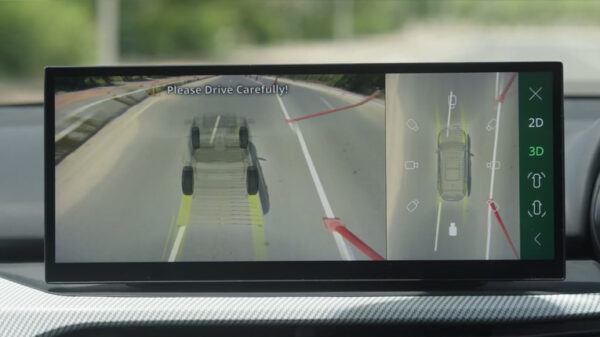
Want to see what’s beneath your car?
The transparent view mode constructs a real-time visual of the underbody, making off-road navigation (and dodging potholes) a breeze.
And then there’s auto park assist, which works for parallel, perpendicular, and angled parking.
Also Read: Tata Motors Partners with Dolby to Bring Immersive Audio to the Harrier EV
However, it’s worth noting that the system may be too cautious for India’s tight spots, where human intuition often wins.
Summon Mode & Reverse Assist
Get stuck in a tight space where even getting into the driver’s seat is a hassle?
The Summon Mode lets you move the car forward (up to 12m) using just the key fob.
It’s not exactly Batmobile-level tech, but it’s incredibly helpful.
And yes, it’ll stop automatically if it detects an obstacle.
There’s also Reverse Assist, designed for scenarios like chaotic Indian markets where U-turns are impossible.
You just leave the steering wheel alone, leaving the sensors to do their bidding and get you out of tight situations.
Access & Control
Apart from the key fob, the Harrier EV can be unlocked via a slick NFC-enabled card by just tapping it on the B-pillar.
The updated Tata iRA app now offers better insights into battery status, lets you locate nearby charging stations, score your driving behaviour, and remotely start the air conditioning.
Front and Rear Comfort
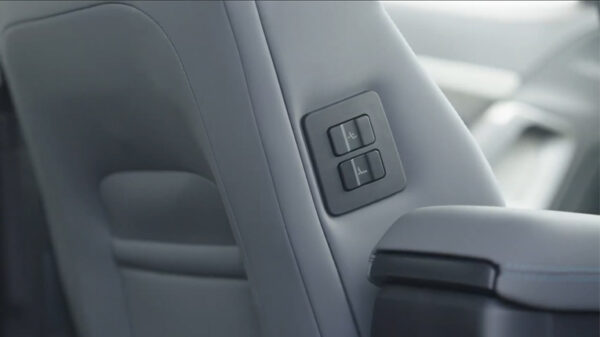
The front row features a ventilated driver’s seat with 6-way power controls and memory, while the passenger gets 4-way ventilation support.
The armrest slides forward and features a built-in cooler box, though it’s awkwardly sized.
A 250ml bottle barely fits, and a can of Coke isn’t much better off.
Rear passengers aren’t left out either.
You get dual 65W USB-C fast charging ports, sunshades, and pillar-mounted rear AC vents for better airflow.
There’s also mood lighting, and of course, a massive sunroof that adds to the cabin’s sense of space.
Taller passengers will appreciate the legroom too.
At 6’3”, I fit comfortably in the rear, especially when seated behind a passenger in ‘boss mode,’ which allows the front seat to be adjusted from the rear seatback controls.
Entertainment Suite
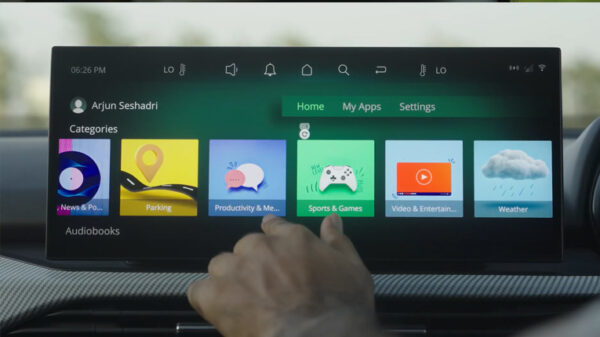
Looking to kill time while parked?
The arcade.ev interface offers access to YouTube, Hotstar, podcasts, audiobooks, and yes, even games.
It’s like an infotainment system with Netflix built in, but remember, most video content is locked while driving.
All of this is paired with a 10-speaker JBL Black sound system by Harman, featuring:
- 4x 6.5-inch full-range speakers
- 4x tweeters on front and rear doors
- 1x mid-range speaker on the dashboard
- 1x subwoofer in the boot
- Powered by an 8-channel amplifier
And yes, Dolby Atmos comes standard, making the Harrier EV India’s first electric SUV with this surround sound experience.
The result? Studio-grade sound in a moving cabin.
Most Tech-Loaded Indian EV?
There’s no doubt: the Tata Harrier EV is India’s most tech-loaded electric SUV to date.
From smart mirrors and Summon Mode to Dolby Atmos and IRVM recording, it brings features that were once reserved for high-end international EVs into the Indian mainstream.
But is it the perfect EV for you? That’s a decision best made based on your lifestyle, driving habits, and tech appetite.
One thing’s for sure; with this kind of innovation, Tata Motors isn’t just driving the EV revolution… It’s programming it.


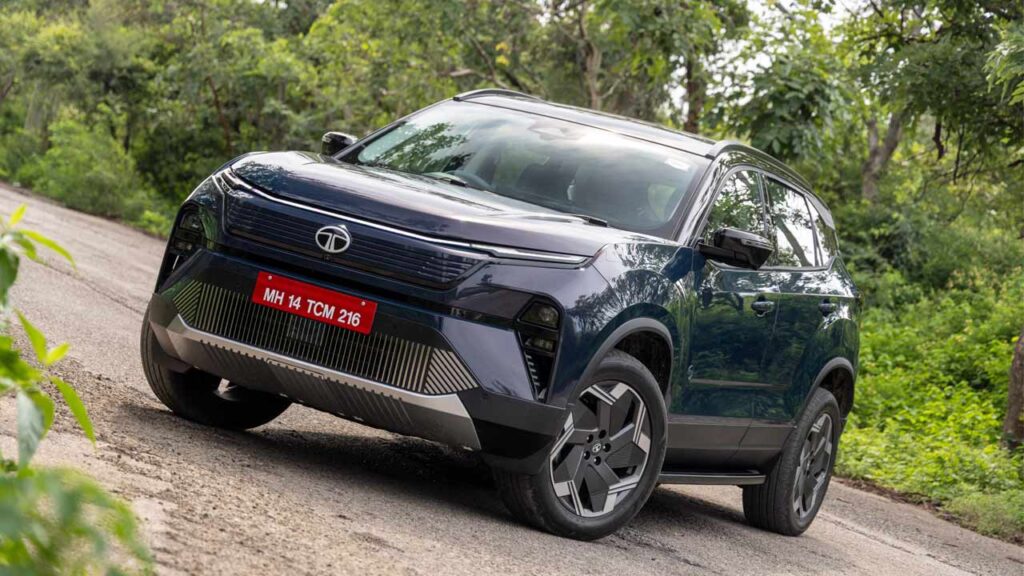
1 Comment
Pingback: Tata Launches New 'Adventure X' Variants for Harrier and Safari